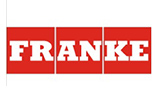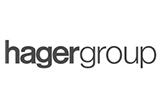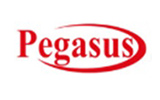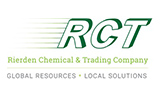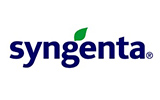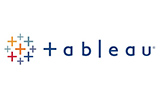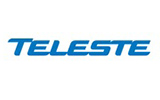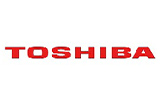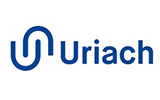

The U.S. toys and games market is projected to experience robust growth from 2025 to 2033, driven by technological advancements, rising disposable incomes, and evolving consumer preferences. The market, valued at USD 29.8 billion in 2024, is expected to reach approximately USD 55.9 billion by 2033, growing at a CAGR of 7.2% during the forecast period. Several key factors are contributing to this growth, including the increasing demand for interactive and smart toys, the rising popularity of educational products, and the expansion of online retailing.
Technological innovation plays a central role in shaping the toys and games market in the U.S. The adoption of artificial intelligence (AI), augmented reality (AR), and virtual reality (VR) in toys is enhancing interactive play experiences and transforming traditional toys into smart, educational products. These advancements have led to the development of smart dolls, robotic toys, and learning devices, capturing the attention of both children and adults. Smart toys, which offer personalized play experiences through apps and connectivity, have gained significant popularity due to their ability to engage children in an innovative and educational manner.
One of the most significant trends in the U.S. toys and games market is the growing demand for educational and STEM:based toys. Parents are increasingly seeking products that promote learning in science, technology, engineering, and mathematics (STEM), encouraging children to develop critical thinking, problem:solving, and creativity skills. As the emphasis on early childhood education and cognitive development rises, STEM toys such as coding kits, science labs, and building blocks are becoming essential tools for parents and educators alike.
The rise of e:commerce and online retailing has also transformed the toys and games market. With the growing number of online shoppers and the convenience of shopping from home, more consumers are turning to digital platforms to purchase toys. Online retail channels provide a wider selection of products, better pricing, and the ease of home delivery, which has led to a shift in consumer behavior. Additionally, direct:to:consumer sales models through branded websites and marketplaces like Amazon have gained significant traction, helping companies engage with consumers more effectively. Social media, influencer marketing, and online communities also play a pivotal role in shaping consumer preferences and driving toy sales, especially among children and teenagers.
The U.S. market is also benefiting from the increasing popularity of licensed merchandise and media:driven toys. Franchises based on movies, TV shows, and video games continue to fuel the demand for licensed action figures, dolls, and games. The success of major entertainment brands such as Marvel, Star Wars, Disney, and video game franchises has led to a surge in branded toys that are based on these popular media. The association with beloved characters from films, cartoons, and video games has made licensed toys highly collectible and desirable, boosting their sales year after year.
Additionally, there is an increasing segment of adult consumers who are driving the growth of the toys and games market. The collectibles market has expanded beyond children, with adults purchasing action figures, limited:edition dolls, and hobby:based games. This trend is particularly noticeable with products tied to nostalgia or pop culture franchises. The growing focus on board games and social games among families and friends is further contributing to the demand for toys and games in the U.S. The shift toward experiential gaming, where players engage in physical and social activities, has also made traditional games and puzzles more attractive to a wider demographic.
Despite the positive outlook, the industry faces several challenges. Economic fluctuations, including inflation and supply chain disruptions, can increase the cost of production and impact consumer spending. Rising costs for raw materials, transportation, and labor are affecting manufacturing and retail prices. Furthermore, the market must address the growing concerns related to safety regulations and compliance with toy safety standards. The increasing presence of counterfeit products in the market also poses risks for brands, particularly in the e:commerce space.
The sustainability trend is also expected to influence the market significantly in the coming years. As consumers become more environmentally conscious, there is rising demand for eco:friendly toys made from biodegradable materials and those that minimize packaging waste. Manufacturers are investing in sustainable production practices, including the use of recycled materials, to cater to this growing demand for environmentally responsible products.
Looking forward, the market is set to benefit from the continuous development of interactive and immersive play experiences, particularly with the integration of smart technologies like voice assistants and AI:powered toys. Additionally, the continued growth of subscription:based toy boxes, which offer customized and curated toys based on a child’s age and interests, is expected to be a major trend. These subscription services provide an opportunity for ongoing engagement with consumers, helping brands build customer loyalty.
The demand for personalized toys—where children can customize their toys or play experiences—will also continue to rise, with consumers seeking unique, one:of:a:kind products. The U.S. market's overall growth will be further driven by increased focus on inclusivity and diversity in toy offerings, with more brands embracing culturally diverse dolls, action figures, and role:play toys that reflect a wider range of backgrounds, abilities, and identities.
In conclusion, the U.S. toys and games market is well:positioned for steady growth between 2025 and 2033, driven by a combination of technological innovation, evolving consumer preferences, and expanding retail channels. Manufacturers that focus on personalization, sustainability, and digital integration will have the greatest opportunity to capture market share. Moreover, companies that can tap into the increasing demand for educational toys, interactive games, and collectibles will continue to thrive in this dynamic and competitive landscape.
Market Segmentation
By Product Type:
By Distribution Channel:
By Age Group:
Key Players in the U.S. Toys and Games Market
Leading International Brands:
The U.S. toys and games market is highly competitive, with leading players continuously innovating to meet consumer demand for smarter, more sustainable, and diverse products. Companies are increasingly embracing eco:friendly materials, smart technology integration, and collaborations with entertainment properties to stay relevant in a fast:evolving market.




